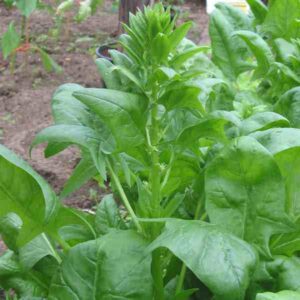Bitter gourd farming is very popular in many countries around the world. It is a very popular vegetable mainly because of it’s medicinal and nutritional value and it provides numerous health benefits. It has high demand and value in the local and international market.
Bitter gourd (Momordica charantia) is actually a tropical and subtropical vine of the family Cucurbitaceae. It is widely grown in Asia, Africa and in the Caribbean. It is grown mainly for it’s edible fruits. Many varieties of Bitter gourd are available and these varieties differ substantially in the shape and bitterness of the fruit.
Bitter gourd actually originated in Africa, where it was a dry-staple staple food of ǃKung hunter-gatherers. Semi-domesticated or wild variants spread across Asia in prehistory, and it was likely fully domesticated in Southeast Asia.
Bitter gourd is also known by many other different names in many different places around the world. It’s other names include Bitter melon, Bitter apple, Bitter squash, Balsam-pear, Karavila, Karela etc.
Due to high demand in the market, price of bitter gourd is also high. So, commercial production can be a very lucrative business. Here we are trying to share more information about bitter gourd farming business from planting, caring to harvesting and marketing. Hope this guide will help you!
What Are The Advantages of Bitter Gourd Farming Business?
Like many other crop farming business, commercial bitter gourd farming also has some advantages. Here we are trying to list the advantages of bitter gourd farming business.
- Bitter gourd plants are very hardy and growing them is very easy and simple. Even the beginners can grow these plants.
- Bitter gourd is a very popular vegetable in many areas. That’s why it has very good demand and value in the market. So commercial bitter gourd farming can be a lucrative business for the making money.
- Bitter gourd plants generally take less time to grow and produce fruit. So, you can get back your invested money within a very short period of time.
- Commercial production can be a good way of steady income, especially for small and marginal farmers.
- Bitter gourd is known and popular for its nutritional and medicinal value. And it provides numerous health benefits.
- Consumption of bitter gourd helps in preventing blood disorders, detoxifies blood and liver, boots immune system and helps in weight control.
- Bitter gourd juice is very common and popular item. Along with this, this vegetable is used for many other culinary purposes.
- Bitter gourd is a rich source of vitamin B1, B2, B3, vitamin C, beta-carotene, iron, potassium, zinc, phosphorus, folate, calcium, manganese etc.
- It is very low in calories and fats. So this vegetable is an excellent choice for weight management and also good for health conscious people.
- Bitter gourd plants are very hardy, and they can be grown in a variety of soil types and climatic conditions.
- As commercial bitter gourd farming a profitable business, so it can be a great employment source for the rural people. Especially for the educated but unemployed young people.
How to Start Bitter Gourd Farming Business?
Starting bottle gourd farming business is very easy and simple. Growing this vegetable is very similar to bottle gourd, sponge gourd and ridge gourd farming business.
Bitter gourd plants are very strong and hardy and growing them is very easy. They generally require less caring and other management. Although, having practical experience will help to run this business better.

So, we recommend visiting as many farms as you can before starting commercial production. Doing this will help you to enhance your experience.
Here we are trying to describe more information about this business from planting, caring to harvesting and marketing. Follow these steps very carefully.
Step 1: Select A Good Site
Selecting a good site for commercial bitter gourd farming is very important. If you already have land, then use it for bitter gourd farming business. Bitter gourd will grow well if the land is fertile enough and receive full sun. And ensure that there is good drainage system available.
Sandy loam soil rich in organic content is considered best for bitter gourd farming. Ideal pH value of soil ranges between 6.5 and 7.5.
Step 2: Consider The Climate Requirement
You can grow bitter gourd plants almost throughout the year. But warm and humid climatic condition is considered ideal for maximum production. July and January is the right time for sowing the seeds.
Step 3: Prepare The Land Perfectly
Preparing the land perfectly is also very important. A well prepared land with good drainage system and full sun is required. Plough the land 2-3 times followed by weeding to bring the soil to fine tilth. Try to add as much organic fertilizers as you can while preparing the soil.
After that form raised beds of 1.2 meter width and spread the lateral tubes in the centre of each bed. Then dig pits of 30cm x 30cm x 30cm size.
Step 4: Choose the Right Variety
There are numerous bitter gourd varieties available to choose from. Choose the right variety for your production depending on your local demand. Consult with some existing farmers in your area while choosing the right variety for your business.
Step 5: Purchase Seeds
After choosing the right variety, purchase seeds from trusted suppliers. Always try to purchase seeds from trusted companies or from reputable local suppliers. Today, there are many reputable big seed companies are selling their seeds online. So, you can also order the seeds online.
Step 6: Planting
Sow the seeds in your previously prepared pits. Sow 2-3 seeds per pit. Treat the seeds before sowing with Trichoderma viride @ 4 g or Pseudomonas fluorescens @ 10 g or carbendazim @ 2 g/kg of seeds. Once the seeds are germinated, thin the seedlings to 2 per pit after 2 weeks. Depending upon the variety, you will need about 1-2 kg seed per acre.
Step 7: Take Good Caring of The Plants
Bitter gourd plants are very strong and hardy and they generally require less caring. But taking additional care will help the plants to grow well and produce maximum fruits. Here we are listing some basic caring tasks.
- Like other plants in the gourd family, bitter gourd plants also perform well in evenly moist soil.
- Provide adequate water depending upon plant growth stage. Don’t over water and don’t allow the soil to dry out.
- Provide support for the plants to climb. You can use cheap materials such as rope and bamboo for making the support.
- It will be better if you can hand pollinate the female flowers.
- Apply adequate organic fertilizers on a regular basis.
- Take necessary steps as soon as possible if you notice anything uncommon.
Step 8: Ensure Adequate Feeding/Fertilizing
Add enough organic fertilizers while preparing the soil. You should apply 10-15 tonnes of farm yard manure while preparing the soil (10-15 days before sowing). Also apply 30 kg urea, single super phosphate 125 kg and murate of potash 35 kg per acre.
Step 9: Ensure Adequate Watering
Immediately water after sowing the seeds. Then water only when needed. Water the plant after every 5-7 days depending upon soil condition. No need to water the plant in rainy season. You can consider installing drip irrigation system if you have water scarcity.
Step 10: Mulching
Mulching is beneficial for retaining moisture into the soil. And at the same time it also helps to prevent weeds. You can use organic materials or plastic for using as a mulch.
Step 11: Perform Regular Weeding
Weeds consume nutrients from the soil and the cultivated plants suffer. So, try to perform regular weeding.
Step 12: Control Pests And Diseases
Like many other commercial crops, the bitter gourd plants are also susceptible to some pests and diseases. Common pests of the bitter gourd plants are Mites, Aphids and Beetles. And common diseases of these plants are Downy mildew and Powdery mildew. Consult with an local expert within your area to have better recommendation regarding pest and disease control.
Step 13: Harvesting
This this the most interesting part of bitter gourd farming business. The joy of harvesting fresh fruits is limitless. Depending on the growing season and variety, the crop become ready for harvesting within 55-60 days. Send the fruits to market after harvesting.

Step 14: Yield
Exact amount of production depends on numerous factors. But generally you can expect around 5 tons per acre. And up to 10 tons per acre for hybrid varieties.
Step 15: Marketing
Marketing bitter gourd is very easy and simple. This vegetable has good demand and value in almost every areas. So, you will be able to sell your products easily in the local market. Although, we recommend determining your marketing strategies before starting this business. Because, you will not be able to make good profits if you can’t market your products well.
Frequently Asked Questions (FAQs)
People ask many questions about bitter gourd farming business. Here we are trying to list the most common questions about commercial bitter gourd farming business, and trying to answer them. Hope you will find your answer. Don’t hesitate to ask us if you have more questions.
How long does bitter gourd take to grow?
Depending on the variety, bitter gourd takes between 55-60 days to grow and produce fruits.
What is the average yield of bitter gourd per acre?
Depends on variety and growing season. But generally, you expect yield up to 4-5 tons per acre. There are some varieties available producing up to 12-15 tons per acre.
Which bitter gourd variety is high yielding?
Depends on your location. For example, there are some high yielding bitter gourd varieties available in India (such as MPKV, Rahuri) producing an average of 12-15 tons per acre.
What is the lifespan of a bitter gourd plant?
Average lifespan of a bitter gourd plant is between 4 and 5 months.
What is the best fertilizer for bitter gourd?
Organic fertilizers such as compost and farm yard manure are considered best for bitter gourd plants.
Is commercial bitter gourd farming profitable?
Yes, definitely! Commercial bitter gourd farming is a profitable business. You can make good profits from this business if you follow the steps mentioned above.






